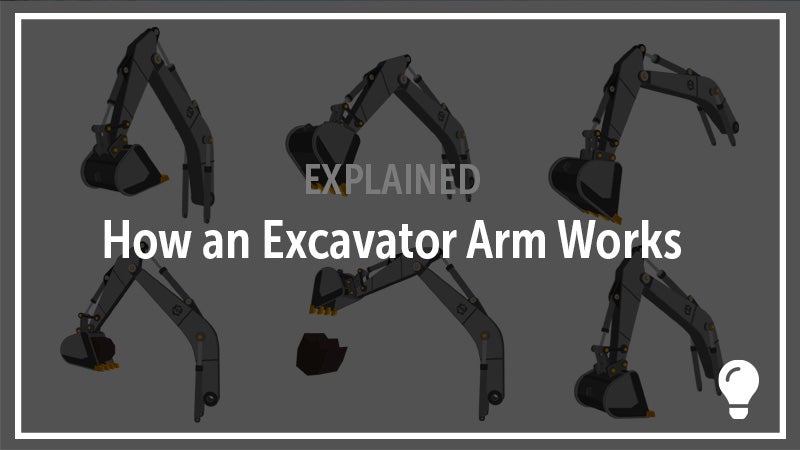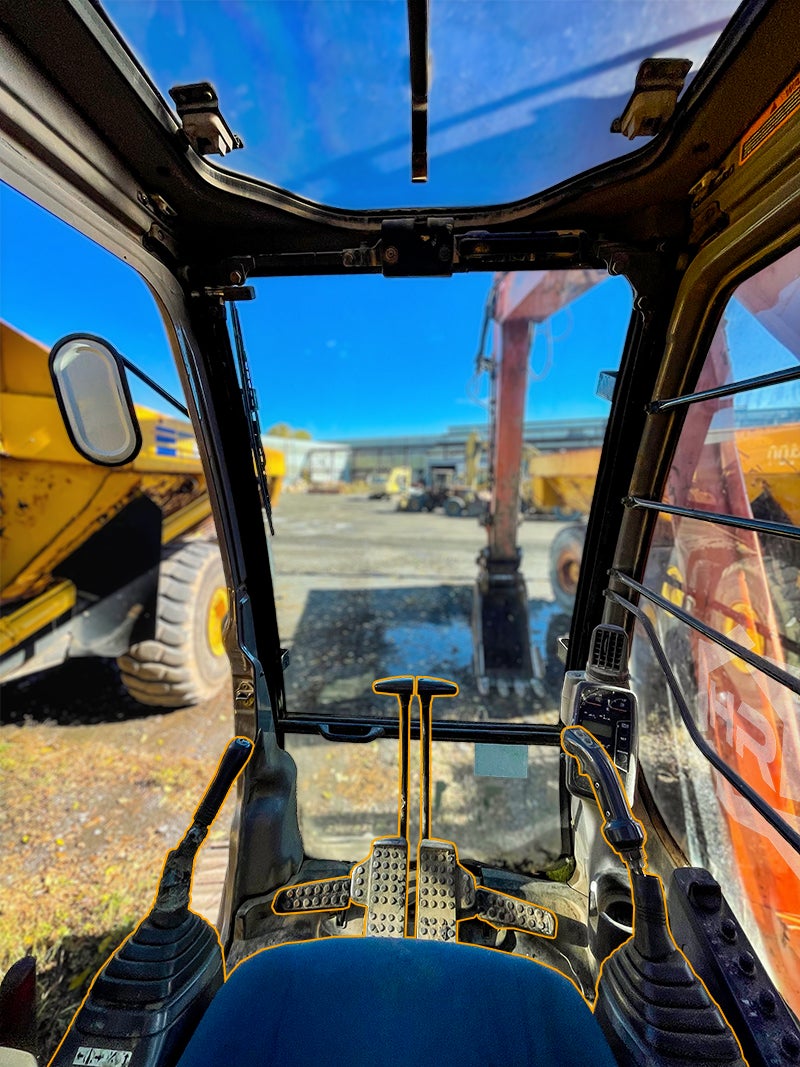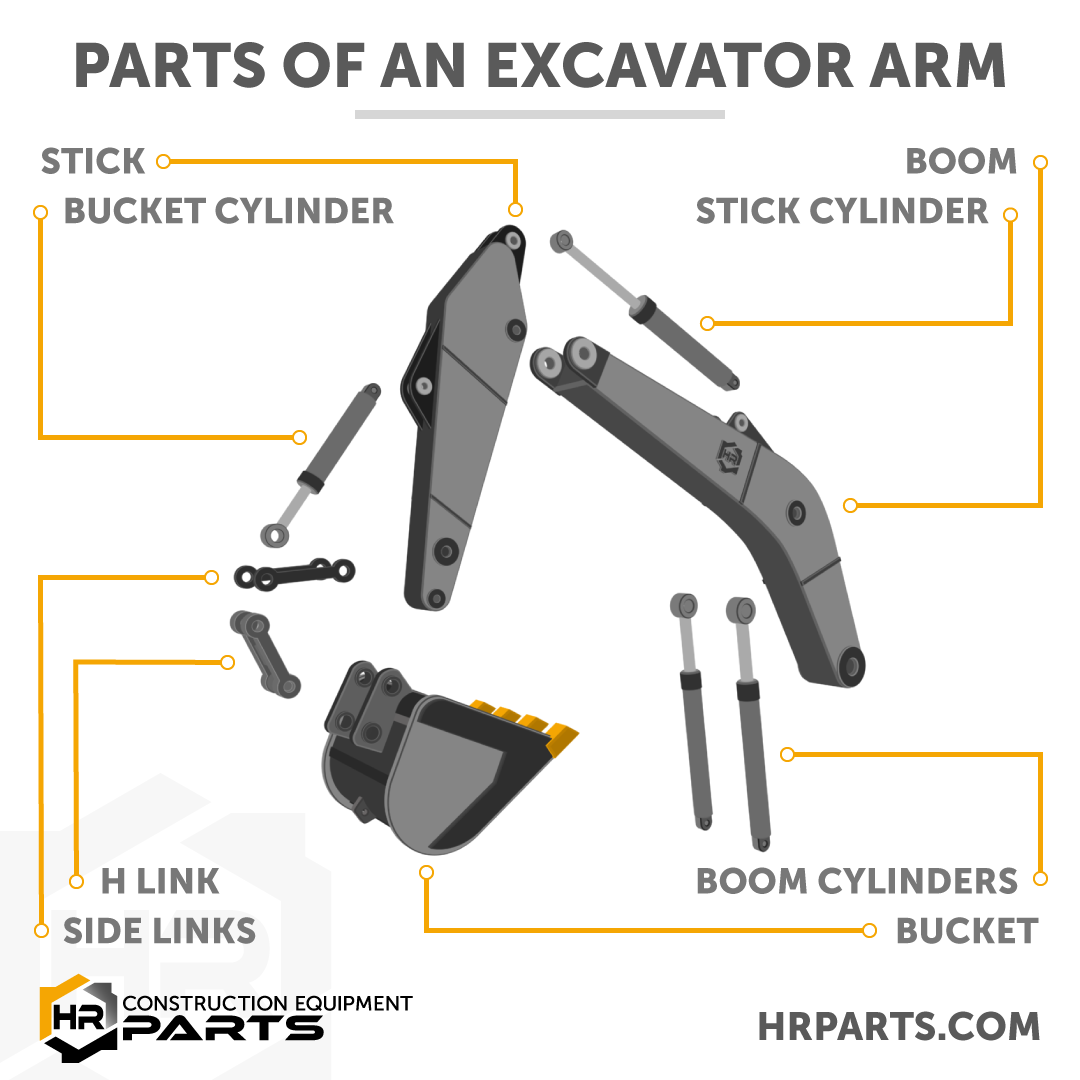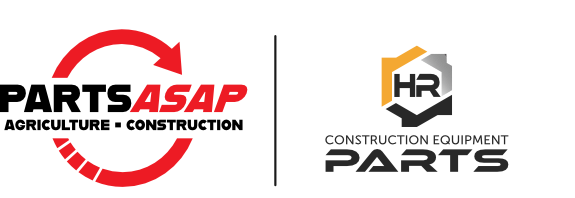
How Does the Arm of an Excavator Work
With an expert excavator operator behind the controls, the fluid, fast, and precise movements of the excavator arm can be so perfectly performed and timed one might think the operator has simply grown a new arm themselves. But anyone who’s sat behind the controls knows it takes knowledge of how the machine works and skill in timing to efficiently control the arm.
To take a better look at how the arm works, how it's controlled, and how each part comes together to pull off its work, read on for a short exploration of how exactly an excavator arm performs its duties.
What Makes an Excavator Arm Move?
An excavator arm consists primarily of a boom, stick, and attachment. A bucket is the most common attachment. Hydraulic cylinders are connected to segments of the arm and from the cab the operator extends and contracts the cylinders. This extending and contracting pivots parts of the arm at connection points to raise and lower the arm, extend it, or curl and uncurl the attachment (or bucket).
Sometimes only one cylinder or set of cylinders will be put to use to control the arm, but most commonly the operator will engage multiple cylinders simultaneously to perform more complex movements. By engaging the cylinders at different times and at different levels of force, the arm can be used to create fluid and precise movements.
For example, when trenching, the operator will contract the boom cylinders to lower the boom, extend the stick cylinder to extend the stick, and contract the bucket cylinder to uncurl the bucket with each cylinder working simultaneously to specific degrees. When the bucket contacts the ground, the operator will begin reversing the direction of each cylinder to create a scooping movement with the bucket.
By combining the movements of the arm with the pivoting ability of the excavator's upper house, the hydraulic cylinders on the arm allow the operator to dig to exact measurements, precisely place materials, spread materials, or even load waiting equipment.

How Does an Operator Control an Excavator Arm?
Controlling an excavator arm is done though skillfully extending and contracting the cylinders at exact times and in exact orders. Inside the cab of an excavator, an operator will have a combination of joysticks at their sides, hand controls in front of them, and pedals on the floor. The arm is controlled by the joysticks while traveling can be done either through hand controls or by using the pedals. Using the joysticks, an operator will extend and contract the boom and stick and curl and uncurl the bucket, but also swing the entire house and arm in an infinite circle to position the arm.
Each joystick is sensitive to the amount of pressure applied to it and the cylinder will respond in kind to the amount of pressure by matching it with the speed at which it extends or contracts. This allows the operator to finely control how much movement each part is performing at specific times.
How the movements of each joystick control the action of the arms is determined by the control patterns assigned to the joysticks. In an excavator there are two common control patterns: ISO controls and SEA controls. In the most common pattern, ISO controls, the right joystick controls the movement of the boom and the bucket while the left joystick controls the movement of the stick and the swinging of the entire house and arm.

What Are the Parts of an Excavator Arm?
An excavator arm consists primarily of a boom, stick, and attachments. Hydraulic cylinders power the movements of the parts, pins bind parts together, and linkage attaches parts to one another in ways that allow for parts to pivot to perform actions. While not part of the arm, the entire hydraulic system is controlled by the main hydraulic pump and main hydraulic valve, located in the house of the machine, and connected to hydraulic cylinders through hydraulic lines throughout the arm and the entire machine.
Boom
The excavator’s boom is the largest of the main components of the arm. It is pinned directly to the house and pivots at that connection. This pivoting action allows the arm to rise and lower relative to the digging surface and also extend the reach of the arm or draw closer as it pivots.
Stick
The excavator’s stick sits between the boom and the attachment and pivots at the connection to the boom. This pivoting action further allows the arm to position the attachment further or closer to the machine, as well as control the height of the bucket relative to the digging surface. By changing the angle of the stick the operator can position the bucket deeper than the tracks of the machine to dig or at a point high off the ground to load a machine or pile materials.
Attachment/Bucket
The attachment on an excavator is the tool at the far end of the arm. Increasingly, a wide range of attachments are used with excavators from attachments for clearing ground to attachments for hammering and breaking large rocks. The most common attachment is the bucket, but even excavator buckets can be as diverse as the materials they handle from teeth and side cutters for digging to thumbs to grab materials.
Boom Cylinders
Most commonly, two cylinders on each side of the machine will be attached at one end to the house and at the other to the boom. Extending and contracting the cylinders will rise and lower the boom and subsequently the entire arm.
Stick Cylinder
A stick cylinder attached to the boom and the stick and mounted at the top of the boom will rotate the stick as it pivots around its connection to the boom.
Bucket Cylinder
Unlike the other cylinders on the excavator arm, the bucket cylinder is connected to the bucket through linkage. By extending the bucket cylinder, the attachment will perform specific actions. In the case of a bucket, the bucket cylinder will control the loading and dumping of the bucket. Since the angle of the bucket can also be changed as the stick and boom are moved, holding a load with efficiency can require changing the angle of the bucket even after a digging motion has been completed.
Linkage
The linkage on an excavator arm are heavy-duty connectors that help define and control the movements of the attachments. These parts link together the stick and attachment while also allowing the attachment to move in very specific ways.
What Are the Attachments for an Excavator Arm?
Increasingly, excavators on a worksite are viewed as tool handlers capable of taking on a wide range of roles beyond simple digging from leveling ground to boring post holes and more.
Some common excavator attachments are:
Quick Coupler
Instead of a standard attachment, a quick coupler is actually a connection point at the end of the arm that allows for the fast changing of other attachments. Buckets for specific jobs, forks for lifting, or other work-specific attachments can be swapped in minutes using a quick coupler.
Tiltrotator
Like a quick coupler, a tiltrotator isn’t a standard attachment, instead a tiltrotator extends the functionality of an excavator by introducing an additional point of control for the operator. Like a hydraulic wrist at the end of the arm, the tiltrotator allows the attachment to rotate and tilt without needing the machine to move. Digging a trench perpendicular to the cab with a bucket or delicately placing materials in exact positions with a grapple are new possibilities offered by a tiltrotator.
Thumb
A thumb on an excavator works with a bucket to provide a grappling device opposite the bucket to capture and better secure the object the bucket is lifting. Large stones, logs, or other oddly shaped materials can be held by the bucket and thumb as they are moved by the arm.
Hammers/Breakers
Hammers mounted to the end of an excavator arm transform an excavator into mobile rock breakers. Large rocks and boulders can be attacked from different angles and split and cleared from worksites using these specialized tools.
Cutters
Especially common in demolition, cutters act as hydraulically powered jaws to slice through a building or other large object quickly and precisely. When combined with tilting abilities the pinching power of cutters can be used for swift demolition and, at the control of a capable operator, even onsite sorting like pulling rebar from concrete while a structure is being demolished.
Whether you’re an expert excavator operator just enjoying a little excavator animation or an inquisitive construction equipment reader, hopefully you’ve found our information on excavator arms interesting and fun. An excavator is a common machine at worksites and seeing it in action makes clear that its design — at the hands of a good operator — is the reason why it is so often an indispensable resource.
If you’ve arrived here in search of an excavator part for your arm (or anywhere on your machine), give us a call or fill out our form. As a top salvager of excavators, our inventory is hard to match and with the expert parts knowledge of our Parts Specialists and robust connections to parts suppliers around North America, often the fastest path to your solution is a quick call to our team.
Excavator Arm Image Gallery






